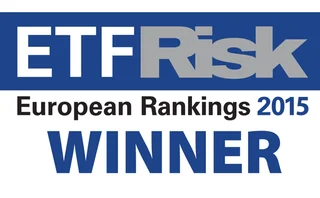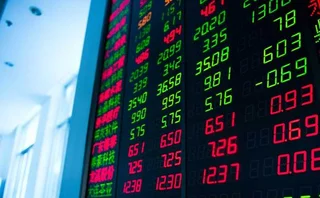
A focus on ETFs
Growth in South Africa's retail structured products market has been slow, with currency controls thwarting sales of products referenced to foreign underlyings. It has prompted some institutions to focus on the exchange-traded fund market
At first glance, the retail structured products market in South Africa looks pretty miserable. For a few years, as the country was reborn following the end of apartheid in the early 1990s, structured products - especially those offering foreign exposure with capital guarantees - were a huge hit. Pent-up demand for foreign investment drove issuance, and the market grew from nothing in 1997 to around EUR4 billion ($627 million) in 1999. Since 2001, however, demand for retail structured products has tailed off.
Part of this can be attributed to the sating of pent-up demand - although this is a tough argument to make five years on when global demand for structured products is soaring. Largely, the decline in the market can be laid at the feet of exchange controls and the value of the rand. Exchange controls are a legacy from the election of the African National Congress in 1994, when it was feared that capital would flee the country. These concerns have dissipated but the controls remain: individuals' investments in other currencies are capped at EUR750,000. This hampers the high-net-worth market, which often drives structured product development.
"Exchange controls affect every offshore asset class," says Umang Ramlal, part of the institutional sales group in South Africa at Deutsche Bank in Sandton. "For example, commodities have been a hot area in the past year, but exchange controls make it difficult to sell commodity exposure to either retail or institutions."
The value of the rand has also helped to thwart sales of structured products offering foreign exposure. With the rand weakening from EUR6.13 to the dollar at the beginning of 2000 to a low of EUR12.45 in December 2001, overseas investments were popular as a hedge against further currency depreciation. But since 2002, the rand has strengthened sharply, reaching EUR5.62 to the dollar at the end of 2004. "Investors made investments (when the rand was at EUR9 to the dollar), but got their returns a few years later at EUR6," notes Philip Nel, vice-president, equity derivatives investor marketing, at JP Morgan in Johannesburg. "Understandably, they were unhappy about the situation."
With the rand now at around EUR6.6, it appears to be the perfect time for another spate of offshore investment. But the negative returns suffered by investors a few years ago has put most off further investment in offshore structured products. At the same time, the local stock market has surged, with the FTSE/Johannesburg Stock Exchange (JSE) Top 40 stock index more than doubling from 6,753.06 in September 2001 to 15,363.58 in September this year.
As such, attempts to sell rand-denominated structured products have been largely unsuccessful. "The local stock market has done exceptionally well, so what cash has been available has either been invested directly or through unit trusts," says Nel. "Retail investors have seen there is value locally and have been reluctant to pay for structures offering capital guarantees that they don't feel are currently necessary."
What limited interest has existed has been for vanilla capital-guaranteed products and, to a lesser extent, more complex cliquet-type products with annual resets, according to Deutsche Bank's Ramlal. These are usually based on the FTSE/JSE stock index, and are often wrapped in life policies for tax reasons. There has also been interest in basket products using similar wrappers.
Examples of such products include the Celebratory Investment Series recently launched by Absa, one of the leading banks in South Africa, which is a five-year linked-endowment policy. It offers investors the opportunity to participate in the South African and global equity markets with a set minimum return, while ensuring capital protection and tax-efficient returns.
The Celebratory Investment Series offers two options: the Onshore Enhanced Investment and the Offshore Enhanced Investment. The Onshore Enhanced Investment is denominated in local currency and requires a minimum investment amount of EUR50,000. Investors can expect a minimum guaranteed return of 15% after tax on the gross initial investment, and 90% participation in the FTSE/JSE Top 40 index over the life of the product.
The Offshore Enhanced Investment is denominated in sterling, requires a minimum investment of £5,000 and pays an after-tax return of 8% on the gross initial investment. The Offshore Enhanced Investment offers equity participation linked to the FTSE 100, S&P 500, EuroStoxx 50 and the Nikkei 225 stock indexes.
These structures, however, have been more the exceptions than the rule. So what does the retail structured product market need for recovery? Clearly, the loosening of exchange controls would help. Equally, while no-one wishes the local stock market to collapse, a slowdown in growth or even a mild weakening would force retail investors to once again look at alternative investment opportunities. "Together with a weakening of the rand, such a move could spur action from investors to consider structured products again," says Nel. "It all revolves around currency strength and capital value."
But one potential weapon in the fight to end the malaise currently suffered by the structured products market could be the reinvigoration of the exchange-traded funds (ETF) market. ETFs are not a new development in the South African market - the first product was introduced in 2000. However, given the strength of the FTSE/JSE stock index, they have proved to be a popular way of giving investors a diversified exposure to the domestic stock market.
ETFs have a number of benefits that investors have been eager to access: they are liquid and have tight bid/offer spreads. They also have low costs - all-in fees are between 0.20% and 1% a year based on the size of an investment - and do not require complicated documentation. What's more, ETFs can be sold short and can therefore be useful as a trading tool. The ETFs pay a twice-annual dividend to investors based on the net dividends received from index constituents.
Absa has launched two ETFs - NewRand and NewGold, both listed on the JSE. NewRand is one of the longest-established products on the market, having been launched in June 2003. It now has an outstanding value of around EUR1 billion and offers investors a customised index of 10 rand hedge stocks - those with the highest 2.5-year correlation with the rand/dollar exchange rate. NewRand was established to protect investors against the rand's depreciation towards the dollar, says Vladimir Nedeljkovic, head of structured products, capital and debt markets at Absa, in Johannesburg. "It fulfils a currency management role that is otherwise impossible in South Africa because of restrictions on currency speculation," he explains.
Backed by bullion
NewGold, on the other hand, was launched in November last year and is designed to track the spot price of gold, less management fees, set at 0.40% a year. The fund is backed by gold bullion held at Rand Refinery, the largest gold refinery in the world. Like most of the popular investment products in South Africa, NewGold is touted as a hedge against rand depreciation. "We have three tonnes of gold worth around EUR260 million held at the refinery, and every security is convertible to gold on demand, subject to the usual rules on holding gold," notes Nedeljkovic. "The liquidity of any instrument is necessarily limited to that of the underlying asset, but clearly an ETF is a convenient way to hold an asset such as gold."
However, it is Deutsche Bank's contribution to the ETF market on which hopes are currently pinned. It launched its Itrix brand ETF with the JSE at the end of September and the listing completed successfully on October 10. Itrix offers two products - one linked to the FTSE 100 and one to the DJ Euro Stoxx50. But it is not their underlying exposure that makes these products unique.
Crucially, these products have the advantage of not being part of retail investors' foreign exchange allowance because the bank obtained a special waiver from the country's regulator, the South Africa Reserve Bank (Sarb). That has come about because Sarb recently granted approval for foreign companies to list on the South Africa stock exchange: ETFs are effectively seen as a single foreign company. Unlike foreign exposure wrapped in life policies, which have minimum maturities of three years, ETFs can be traded at will.
"There's no reason why this structure could not be the forerunner for similar products on other asset classes or strategies," says Deutsche Bank's Ramlal. "It's possible that commodity, fixed-income or hedge fund exposure could be obtained through an ETF-type structure, giving retail investors access to asset classes that are currently difficult to invest in because of exchange controls."
Giving retail investors the ability to diversify their portfolio by investing in overseas equity indexes without eating into their foreign exchange allowance is likely to spark increased interest in the exchange-traded fund space. But without further liberalisation in foreign exchange controls, combined with a drop in the domestic equity market, the market for structured products is likely to remain muted in the near term.
An institutional problem
The institutional investor market for structured products has been shaped by the same trends that have affected retail investors - primarily the strength of the rand, which has resulted in earlier overseas investments returning less in rand terms than expected. While there remains a strong appetite for asset and market diversification, institutional investment is limited by exchange controls - currently set at between 15% and 20%, depending on the type of institution.
However, there are hopes that the rules could be relaxed in the near future. Bankers suggest that finance minister Trevor Manuel is likely to increase limits for pension funds to 30% from the current 15%. This could prove a boon for structured products, says Philip Nel, vice-president, equity derivatives investor marketing, at JP Morgan in Johannesburg. "Structured products or options would be a quick way of delivering the increase in offshore exposure that would be required following such a change," he notes.
In the meantime, many institutional investors have implemented equity option strategies in order to enhance returns on equity investments, say bankers. "Rather than an investor putting money on deposit for one year and simply earning the Johannesburg Interbank Agreed Rate (Jibar), they have been selling caps, collars, straddles, strangles and swaptions against deposits to earn up to 30bp over Jibar," says one banker. "This has happened because the market has matured and bid/offer spreads have tightened. Margins have also been squeezed and interest rates have also fallen, forcing investors to search for yield."
Laurence Neville
Only users who have a paid subscription or are part of a corporate subscription are able to print or copy content.
To access these options, along with all other subscription benefits, please contact info@risk.net or view our subscription options here: http://subscriptions.risk.net/subscribe
You are currently unable to print this content. Please contact info@risk.net to find out more.
You are currently unable to copy this content. Please contact info@risk.net to find out more.
Copyright Infopro Digital Limited. All rights reserved.
As outlined in our terms and conditions, https://www.infopro-digital.com/terms-and-conditions/subscriptions/ (point 2.4), printing is limited to a single copy.
If you would like to purchase additional rights please email info@risk.net
Copyright Infopro Digital Limited. All rights reserved.
You may share this content using our article tools. As outlined in our terms and conditions, https://www.infopro-digital.com/terms-and-conditions/subscriptions/ (clause 2.4), an Authorised User may only make one copy of the materials for their own personal use. You must also comply with the restrictions in clause 2.5.
If you would like to purchase additional rights please email info@risk.net
More on Exchange-traded products
Realising the China opportunity
Webinar: HKEX
One size does not fit all: Smart beta explained
Sponsored feature: WisdomTree Europe
ETF Risk European Rankings 2015: ETF trading platform for institutional investors
Sponsored feature: Tradeweb
ETFs – Transforming the investment landscape in Asia
Sponsored survey analysis: Deutsche Asset & Wealth Management
Flood of oil ETF investors reshaping market, analysts say
'Massive' inflows cushioned oil price drop in early 2015, but could easily reverse
Currency-hedged ETF surge prompts hedging concerns
Eurozone QE programme prompts wave of investor interest
Currency-hedged ETF inflows boom
Investor interest sparks race to construct new products
Shanghai ETF option volatility spikes on China market fears
A crackdown on margin financing strengthens bearish sentiment







